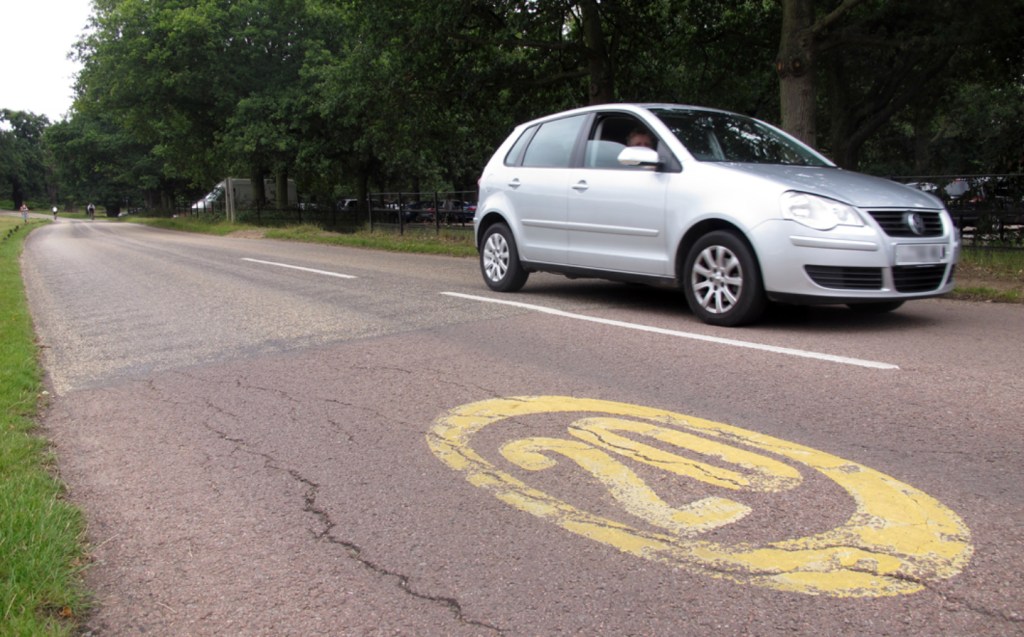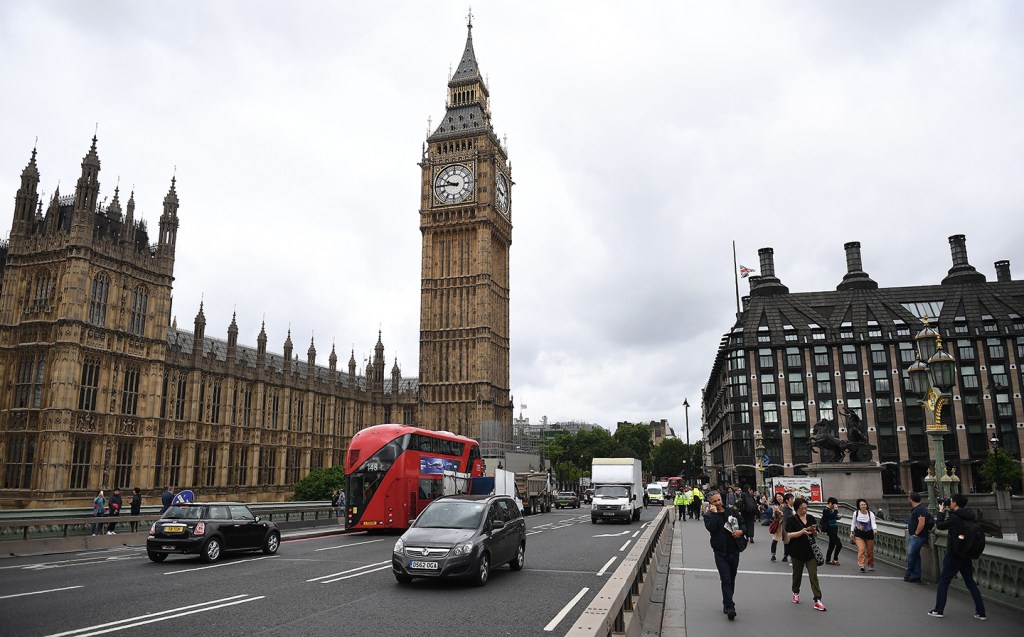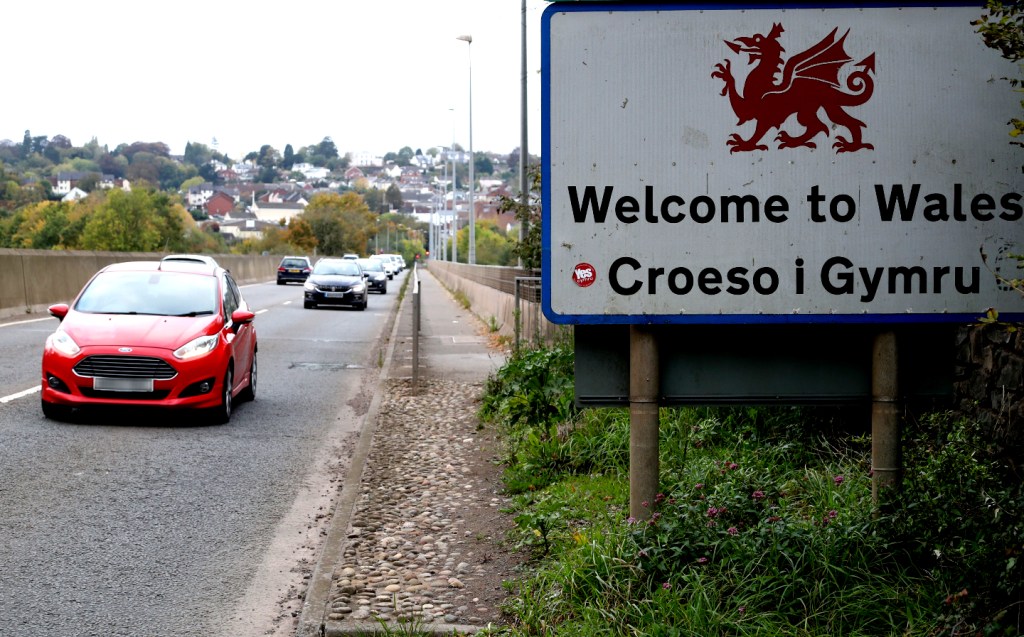Penalty for speeding in 20mph? It's a postcode lottery, research suggests
Lead-footed drivers are better off in Cumbria
There are significant regional variations in the number of motorists penalised for breaching 20mph speed limits in built-up areas, with some areas issuing tens of thousands of speeding tickets and others, none at all.
According to information obtained by the road safety campaign group Action Vision Zero under a Freedom of Information request, last year Avon & Somerset issued 23,338 Notices of Intention to Prosecute (NIPs) for speeding in a 20mph compared to zero for Cumbria, Lincolnshire, Humberside, Devon, Cornwall and Thames Valley.
South Wales and Cleveland issued 8,372 and 1,644 NIPs respectively; in contrast, Bedfordshire issued one notice, West Mercia two, Staffordshire three, Dorset five and Kent six.

Relative to the number of casualties, the level of enforcement at 20mph is about half the rate of those caught speeding on 30mph and 40mph roads and motorways, and less than a fifth of the rate at 50mph and dual carriageways of 70mph.
Only roads with the national speed limit of 60mph have a lower level of enforcement relative to the number of casualties in collisions.
Proponents of 20mph speed limits in built-up areas argue that the limits do work to reduce road deaths and serious injuries.
After Edinburgh introduced 20mph speed limits on around 80% of its streets between 2016 and 2018, road deaths fell by a quarter in one year and serious injuries by a third.
Researchers at the University of Edinburgh found that, following the introduction of the new limits, the number of collisions in one year fell by 40% to 367 and that there were 409 fewer casualties — a drop of 39%.

Overall, recorded speed in the city was reduced by 1.34mph, a drop of 5.7%. The number of cars travelling at more than 25mph on urban roads fell to 31%, which represented a fall of 14%.
“The study shows that city-wide speed reductions can reduce collisions and casualties and that they were increasingly accepted by the local community,” said Professor Ruth Jepson who led the project, and Scotland intends to follow the example set by Wales (which will introduce 20mph built-up-area speed limits from next year) and bring in similar limits from 2024 or 2025.
Opponents of 20mph speed limits, however, say that they are inappropriate for some areas deemed to be built-up (i.e. roads with street lighting intervals of less than 200 yards) and that this, coupled with inconsistent enforcement, is catching motorists out.
Steve McNamara, general secretary of the Licensed Taxi Drivers’ Association, which represents 10,000 drivers, said that his association is being inundated with requests for legal assistance from drivers with previously clean licences, given penalty points for breaching the 20mph limit, mostly in London, where, at present, around 50 miles of road fall under a 20mph speed limit, something that Transport for London intends to expand to around 137 miles by 2024.
There had been an 800% increase in the number of NIPs issued to his members in the past six months compared to the previous six months, said McNamara, with 80% of those offences in 20mph zones.

McNamara blamed such a zealous insistence on a 20mph speed limit on “young, white educated men who cycle everywhere … trying to build London in their image.”
Many drivers ignore 20mph limits
Blanket imposition of 20mph speed limits, in addition to vexing drivers, may also not even be particularly effective in slowing traffic, with research by the RAC finding that in areas where motorists did not feel a 20mph limit was appropriate, they were highly likely to ignore it.
Of drivers polled by the RAC who admitted to speeding in a 20mph area, 49% attempted to justify it on the grounds that it was not an appropriate limit for the road.
“Research by the RAC suggests compliance with 20mph speed limits is quite poor, with an increasing number of drivers believing the limit is inappropriate for the road,” said Simon Williams, the RAC’s road safety spokesman.
“Rather than setting a default 20mph limit on all restricted roads it would be better to target areas where they are most needed, for example on residential roads or in areas where there is high footfall, as opposed to main ‘arterial’ roads where there are few pedestrians.”
A key part of the legislation to be introduced in Wales may, however, provide a blueprint on how to address instances of widespread opposition to 20mph speed limits on specific roads.
The legislation, which passed through the Welsh parliament (the Senedd) in July, will mandate a 20mph speed limit across most built-up areas, but will allow local authorities to set a different speed limit if they feel that 20mph is inappropriate for the conditions.
A trial of 20mph speed limits in Monmouthshire in south Wales ended with the council reverting to a 30mph limit on some — but not all — of the roads in question following public backlash.
The lower limit was scrapped on the arterial B4245 from Magor to Portskewett (close to the M4 Severn crossing) due to complaints that it was negatively impacting traffic flow and increasing journey times.
There was, however, general support for the lower 20mph limit in residential side streets and outside schools and, as such, it was retained in those areas.
It isn’t clear yet whether England plans to follow Wales and Scotland in adopting a blanket 20mph built-up-area speed limit, but according to the safety campaigner Rod King of the group 20’s Plenty for Us, the Department for Transport “is looking at the Welsh 20mph implementation with much interest.”
Penalties for breaking a 20mph limit
As it stands, the punishment for speeding in a 20mph zone escalates from a fixed penalty, typically three points and a fine of £100, if caught driving above 24mph, with the possibility of going on a speed awareness course for those caught driving at 24mph to 31mph, if they are eligible.
Above 35mph an offender should expect to be summoned to court and fines can rise up to 700% of weekly income, to a maximum of £1,000.
Drivers caught speeding within two years of passing their test could have their driving licence revoked if they have six or more penalty points.
Related articles
- After reading about a variation in penalising motorists in 20mph zones, you may want to read how the public wants 60mph motorway speed limits – according to a WWF survey
- And check out how motorists are being fined millions of pounds for inadvertently entering low-traffic neighbourhoods
- 2030 petrol and diesel car ban: 12 things you need to know
Latest articles
- Bedeo Defender 110 2024 review: Does electric Landie with in-wheel motors make for a perfect off-roader?
- F1 2024 calendar and race reports: What time the next grand prix starts and what happened in the previous rounds
- BYD Seal U 2024 review: Chinese brand adds plug-in hybrid SUV to its electrified line-up
- New Mini John Cooper Works revs up for Nürburgring 24-hour race debut
- Ineos Grenadier Quartermaster 2024 review: British pick-up is a tough mudder but too flawed to be a real workhorse
- Mini Cooper SE 2024 review: All-new electric hatchback is playing to the crowd
- Jeep Wrangler 2024 review: Impressive off road but you’d still have to be a committed contrarian to buy one
- Around 500 Ford workers in UK could go on strike over cost-of-living pay dispute
- Durham solar car team to take part in 24-hour race with smart tyres and night-driving solution














